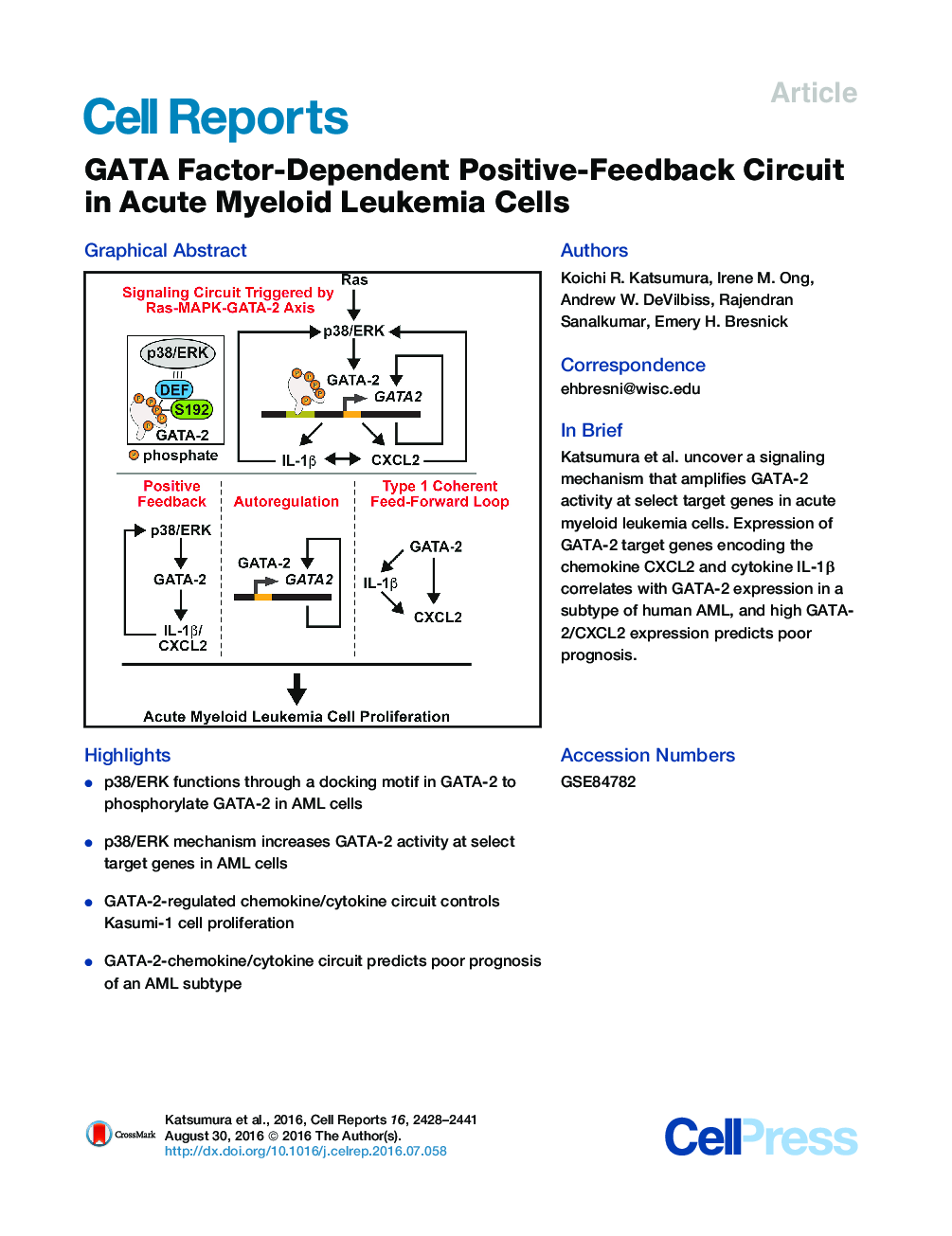| Article ID | Journal | Published Year | Pages | File Type |
|---|---|---|---|---|
| 2039356 | Cell Reports | 2016 | 14 Pages |
•p38/ERK functions through a docking motif in GATA-2 to phosphorylate GATA-2 in AML cells•p38/ERK mechanism increases GATA-2 activity at select target genes in AML cells•GATA-2-regulated chemokine/cytokine circuit controls Kasumi-1 cell proliferation•GATA-2-chemokine/cytokine circuit predicts poor prognosis of an AML subtype
SummaryThe master regulatory transcription factor GATA-2 triggers hematopoietic stem and progenitor cell generation. GATA2 haploinsufficiency is implicated in myelodysplastic syndrome (MDS) and acute myeloid leukemia (AML), and GATA2 overexpression portends a poor prognosis for AML. However, the constituents of the GATA-2-dependent genetic network mediating pathogenesis are unknown. We described a p38-dependent mechanism that phosphorylates GATA-2 and increases GATA-2 target gene activation. We demonstrate that this mechanism establishes a growth-promoting chemokine/cytokine circuit in AML cells. p38/ERK-dependent GATA-2 phosphorylation facilitated positive autoregulation of GATA2 transcription and expression of target genes, including IL1B and CXCL2. IL-1β and CXCL2 enhanced GATA-2 phosphorylation, which increased GATA-2-mediated transcriptional activation. p38/ERK-GATA-2 stimulated AML cell proliferation via CXCL2 induction. As GATA2 mRNA correlated with IL1B and CXCL2 mRNAs in AML-M5 and high expression of these genes predicted poor prognosis of cytogenetically normal AML, we propose that the circuit is functionally important in specific AML contexts.
Graphical AbstractFigure optionsDownload full-size imageDownload as PowerPoint slide
